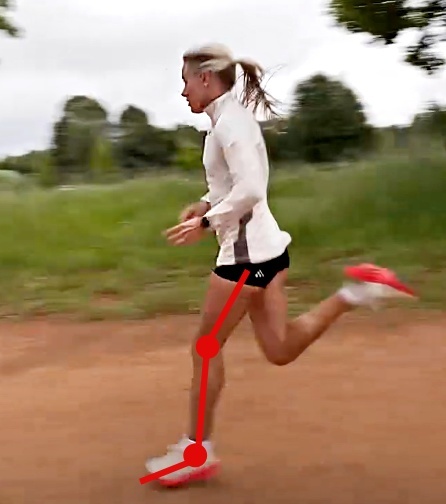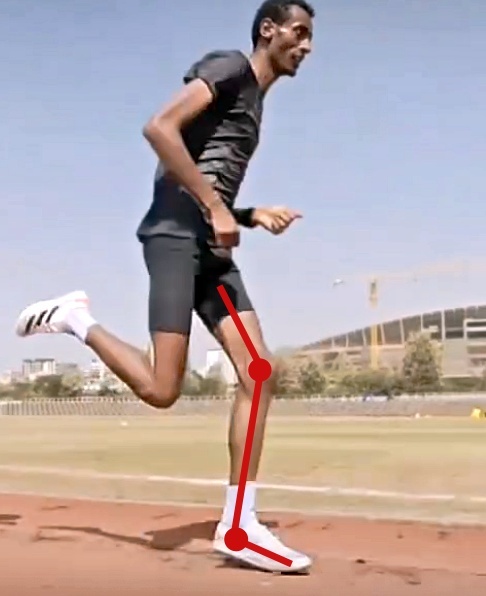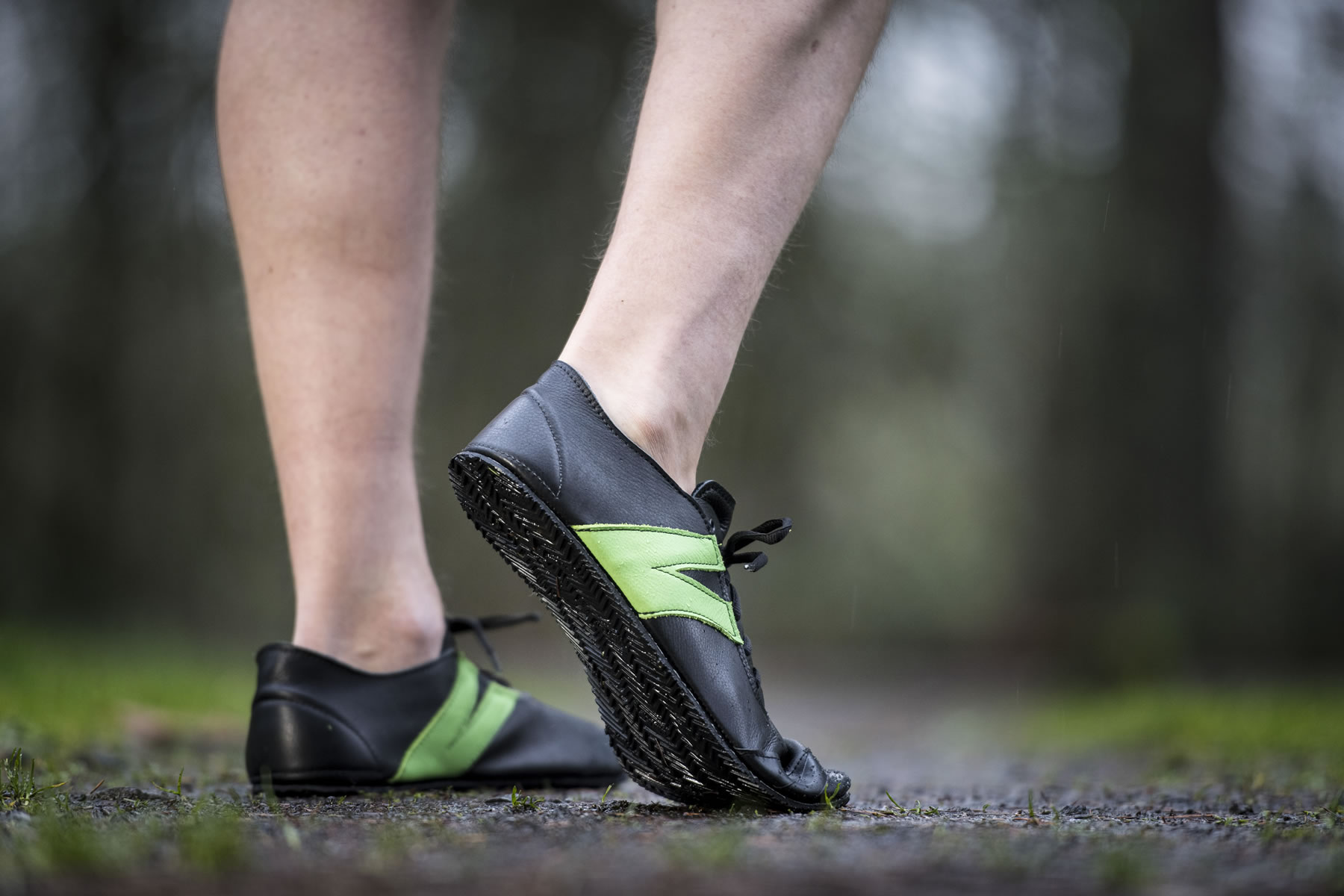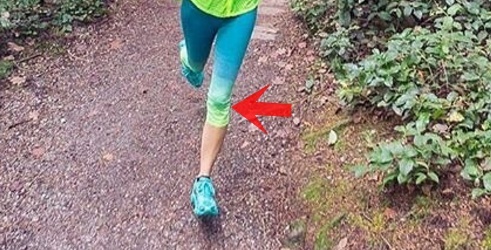Consistent with the research (references below article), forefoot running is the best for your knees than heel strike running. This is because landing on your forefoot (the balls of your foot, not high up on your toes) was found to naturally cause the knee to bend and softly flex, which not only reduced torque and rotational stress off the knee, it also helped improve stride mechanics by reducing stride length, while increasing cadence, helping to prevent further knee joint stress and strain.


By landing on the front part of your foot when you run, improves your entire stride mechanics, giving you the best chances to protect your knees as well as your shins, hips and lower back. When you land forefooted and the knee naturally bends, a higher cadence is engaged which results in less ground contact-time, and therefore, less ground-force production and more foot-step stability, and when there’s less forces acting across the body, your chances of injury diminishes.

Another positive outcome of the forefoot strike-knee bending combo is it prevents an over-stride by reducing stride length, which prevented a jarring force at ground-contact and reduces rapid deceleration. The net effect was reduced center mass velocity, peak hip adduction angle and moment and tibial accelerations. In other words, forefoot running engaged a contact with the ground that’s so brief that certain impact variables are not fully produced, and even better, some forces aren’t even produced at all.

What About Heel Strike Running?
Heel strike running puts the knee under significantly more pressure due to naturally engaging greater knee extension at landing. In other words, the knee does not bend at landing when a heel strike is used. From this, you can’t really accomplish much the same in improving your stride mechanics, and therefore injury risk factors, if you land with a heel strike. This is because the full knee extension, facilitated by heel striking, changes your stride mechanics that are directly responsible for decelerating the body for too long, and too intensively. This causes a fire-storm of impacts to be multiplied, not just on the knee, but across the shins, hips and the lower back (read more here on that)!


In fact, the farther back you land on your heel, the more your knee unbends and locks-out into an unstable position. At the same time, this sets yourself up for over-striding because an unbent knee upon and at landing, again, only engaged by heel striking, sends your foot to land too far ahead of your hips, which results in a more intense degree of deceleration, meaning the body brakes too long, and too intensively with the ground. What remains a key issue with this landing configuration is the knee is overly-used to accelerate the entire body forward, which was found to literally dangerously overheat the knee. And, running shoes will not help with this. The only way to sustainably reduce mechanical burdens off the knee is to change your foot strike to a forefoot strike.
All in all, the act of heel striking causes the foot to take a wasteful detour that increases stride length and accounts for changes in impact production that causes all-around impact levels to be more pronounced than in forefoot running.
Need more convincing that heel strike running is the most unsafe, and uneconomical style of running? Here are well over 30 evidence-backed reasons heel strike running will get you hurt, bad, whereas forefoot striking wont!

References:
Derrick, TR., Hamill, J and Caldwell, GE. Energy absorption of impacts during running at various stride lengths. Med Sci Sport Exerc, 1998; 30:128 e 35.
Gershuni et al. Ankle and knee position as a factor modifying intracompartmental pressure in the human leg. J Bone Joint Surg Am, 1984; 66:1415-20.
Squadrone R and Gallozzi, C. Biomechanical and physiological comparison of barefoot and two shod conditions in experience barefoot runners. J Sports Med Phys Fit, 2009; 49:6-13.
Tsintzas et al. The effect of ankle position on intracompartmental pressures of
the leg. Acta Orthop Traumatol Turc, 2009; 43:42-8.
Winter, DA. Moments of force and mechanical power in jogging. J Biomech, 1983;16:91 e 7.

If you’d like, you can support Run Forefoot and help keep it going by making a donation in any amount of your choosing:

Or, you can support Run Forefoot by shopping at the BEST Barefoot Shoe Brands, and be sure to bookmark these links 🙂
Lonowear: https://lonowear.com/?ref=cedsholh
Saguaro: https://www.saguaro.com/?ref=9bVA8fEkmDvB-I
Vibram FiveFingers: https://www.anrdoezrs.net/click-7600968-11372648
Vivobarefoot: https://amzn.to/3vycQOY
Be Lenka: https://www.tkqlhce.com/click-7600968-13947200
Xero Shoes: https://xeroshoes.com/go/Run_Forefoot
Iguaneye: https://www.iguaneye.com/?ref=8tfXVc92
Soft Star Shoes: https://shrsl.com/3mp1b
Wilding Shoes: https://bit.ly/3lIygQP
Bretta Riches
BSc Neurobiology; MSc Biomechanics candidate, ultra minimalist runner & founder of RunForefoot. I was a heel striker, always injured. I was inspired by the great Tirunesh Dibaba to try forefoot running. Now, I'm injury free. This is why I launched Run Forefoot, to advocate the health & performance benefits of forefoot running and to raise awareness on the dangers of heel striking, because the world needs to know.
Latest posts by Bretta Riches (see all)
- Can You Run In Barefoot Shoes? Yes, But DON’T Heel Strike! - 21/07/2024
- Why Cushioned Running Shoes Are Really Bad for Your Feet - 19/07/2024
- Do Cushioned Running Shoes Cause Injuries? - 17/07/2024

Weeeee, what a quick and easy sooituln.
That’s way the bestest answer so far!
I’m so glad that the internet allows free info like this!